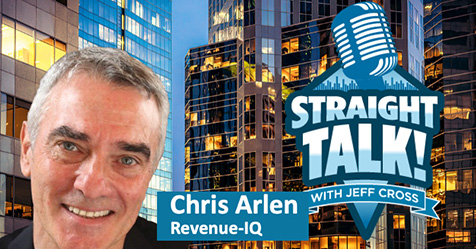While the Internet of Things (IoT) has been around for a while, companies are increasingly realizing the sustainability benefits that IoT—internet-connected—devices can offer. This realization is no doubt spurred by the transformation of environmental sustainability from a “nice-to-have” component of doing business to a “must-have” goal that organizations continually work toward.
There’s been a wave of organizations setting measurable sustainability goals and highlighting their progress. In 2018, 86% of companies on the S&P 500 Index issued a sustainability report, up from only 20% in 2011. Microsoft announced in January 2020 that the company will go “carbon-negative” by 2030. Other major corporations like Amazon and Delta Airlines also have set goals to reduce their carbon footprint in the coming years.
As more companies begin prioritizing sustainability, it helps to have the right devices. In the professional cleaning industry, the capability of IoT devices to provide 24/7 facility monitoring, remote data transmission, and more accurate cleaning dosages can increase both efficiency and productivity. By using the IoT to reduce wasted resources, time, and profit, businesses can improve their performance along the metrics most crucial to their bottom line. In doing so, they become one step closer to their larger sustainability goals that are often closely tied to brand reputation and customer loyalty.
The triple bottom line approach
When considering how IoT devices can fit into sustainability, it’s important to take a holistic approach and consider the triple bottom line. All businesses are concerned with the traditional, singular bottom line of profit, but it takes more than money to make a business successful. The triple bottom line approach assesses business performance along three dimensions: people, planet, and profit (also known as social, environmental, and financial).
To use this framework effectively, businesses need to first decide what “social” and “environmental” performance mean to them. For example, socially, one company might prioritize diversity and inclusion among its workforce, while another might put more effort into company-wide safety and reducing recordable workplace injuries. Environmentally, one company might take strides to reduce its buildings’ electricity consumption, while another might focus on reducing the amount of waste it puts into landfills each year.
Regardless of how you measure it, the triple bottom line approach offers a bigger-picture understanding of a company’s overall performance. A business making significant profit might be doing so at the expense of their employees’ well-being or by causing environmental destruction. Without considering the additional social and environmental effects, companies cannot fully understand the total cost of doing business.
Finding the right IoT fit
The triple bottom line framework can seem intimidating, but IoT devices can help businesses perform better along all three dimensions. IoT solutions offer numerous ways to increase environmental, social, and financial performance at a reasonable cost. To maximize the return on your investment, consider the following IoT innovations that support cleanliness:
- Smart chemical dispensers: Connected chemical dispensers for laundry can report data related to chemical and water consumption, machine-operating hours, triggered alarms, and more. Walter E. Nelson, a large, family-owned janitorial, paper, and chemical distributor in the Northwest, installed a multiwasher dispensing system with IoT features across its consumer laundry facilities. This system reduced the facilities’ chemical dispensing labor and equipment maintenance by 80%.
- Robotic floor care: Robotic floor care machines can follow customized maps to clean floors while employees work on other key cleaning tasks. Sonar and lidar sensors ensure that these machines avoid obstacles like walls, staircases, and people as they autonomously clean. Meanwhile, managers receive alerts when cleaning tasks are complete, when machine tanks need refilling, or when the equipment requires maintenance. Automatic floor care machines can save up to 80% on labor costs and use up to 85% less water and chemicals. Alerts also help reduce downtime to keep these blended human and robotic teams productive.
- Intelligent hygiene solutions: Today, facilities can implement smart dispensers for paper towels, soap, and odor control to avoid lapses in restroom maintenance. For example, Hartfield-Jackson Atlanta International Airport installed a smart monitoring system to alert custodians when restrooms were low on supplies. Within just one year, the airport saw a 40% decrease in paper towel outages and a 22% decrease in tissue paper waste.
Creating sustainable solutions
Recent research predicts that over the course of the next 10 years, the number of IoT devices will grow from 75 billion to more than 100 billion, making them essential for daily operations. IoT devices offer many advantages to businesses and help the world become a more connected place. These benefits are not solely financial, but also encompass people and the planet. Consider the following triple bottom line benefits:
- Greater insight into operations: With access to real-time data, facility managers gain a clear understanding of everyday operations and can keep up with any immediate or upcoming maintenance needs to reduce downtime. This can help managers maximize profit by reducing wasted time on the job, improve social performance by helping employees perform their jobs more efficiently, and increase sustainability by ensuring fewer materials are wasted.
- Resource and cost savings: By tracking resources, owners and managers can identify when product has been wasted and make necessary adjustments to reduce the risk of further waste. Solutions that provide access to data about chemical or product usage can enhance inventory management and reduce unnecessary shipments. Companies can reduce the environmental impact of transporting materials too often and even increase profit by spending less money on unnecessary restocking.
- Increased productivity: Improving productivity without sacrificing cleaning performance and worker safety is an important goal. Efficiency often yields cost savings and streamlined processes can reduce waste and strain on employees. For instance, when a chemical dispensing system accurately dispenses the right amount of chemical and water, it eliminates the need to reclean, thus improving productivity. Additionally, IoT devices like robotic autoscrubbers take on the time-consuming task of floor care to allow staff to focus on other important responsibilities.
- Better cleaning results: Cleanliness significantly impacts the way people perceive a brand. Whether a facility uses the IoT to keep track of the laundry process or to help keep floors clean throughout the day, smart devices can provide better cleaning results on the first try, which drives customer satisfaction. Additionally, smart soap and paper towel dispensers can enhance restroom maintenance schedules and the guest experience. These improvements can increase profit by encouraging longer customer shopping trips in a retail setting as well as future visits, while also limiting wasted resources.
- Fewer emergency calls: With alarm capabilities, IoT devices alert facility managers as soon as a problem occurs, limiting equipment damage and costs associated with unaddressed issues. Quickly resolving matters also reduces the number of customer complaints and overall emergencies. Responding to fewer emergency calls eliminates unnecessary trips to customer sites and enhances productivity, thereby reducing costs.
Building a better business
When it comes to sustainability, even companies with the best intentions can fall flat if they don’t invest in the right solutions to support their efforts. Fortunately, the wide range of IoT innovations currently available helps building managers and building service contractors make smart business decisions that support the triple bottom line. By frequently and reliably transmitting insightful and accurate data, IoT devices give organizations the tools they need to operate more sustainably, while also supporting cost savings and the workforce.




